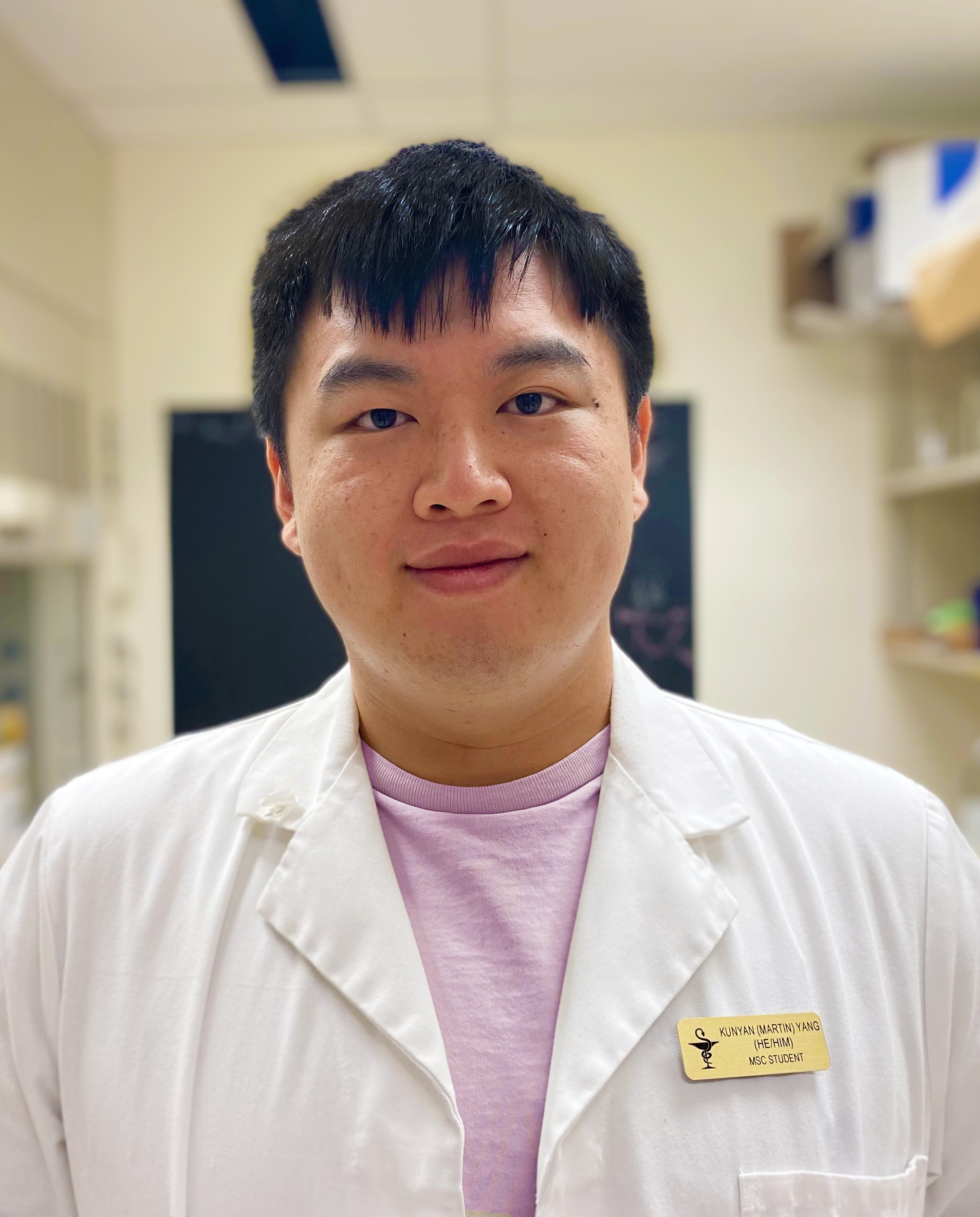Graduate student Kunyan Yang hopes his research will present a new treatment option to lower blood sugar in people with diabetes
28 November 2022

Kunyan Yang. Image supplied.
Kunyan Yang is a master of science student in the Faculty of Pharmacy and Pharmaceutical Sciences at the University of Alberta. Yang’s research project involves the development of a brain-sparing derivative of the antipsychotic drug pimozide to help lower blood sugar levels in people with Type 2 diabetes.
We spoke with Kunyan during Diabetes Awareness Month to find out more about his research.
What is your research project?
Our bodies rely on three major fuel sources that we obtain from the food we eat: fats, sugars, and protein. However, during starvation our livers make a fourth fuel source that our organs (brain, heart, and muscle are the main users) can use to make energy — the ketone body. Past research has focused heavily on understanding the regulation of fat, sugar, and protein metabolism in health, and how they malfunction in various diseases such as obesity and diabetes. The regulation of ketone body metabolism in health and disease has received much less attention. However, exciting data in our lab has shown that decreasing the muscle’s ability to burn ketone bodies for energy improves blood sugar control in obesity/diabetes.
In addition, we have identified an older drug previously used to treat psychoses — pimozide — which is able to decrease the ability of the muscle to burn ketone bodies for energy. Unfortunately, pimozide is used less frequently for treating psychoses, due to the development of newer antipsychotic drugs with improved safety profiles, despite this older drug being significantly cheaper. Importantly, pimozide also appears to improve blood sugar control in obesity, but does have some brain-related side effects (e.g. drowsiness) that may hinder its use as a therapy for diabetes.
Thus, the goal of our research is to use chemistry to modify pimozide in a manner where it cannot penetrate the brain. We believe this “brain-sparing pimozide” may represent an exciting new treatment option to lower blood sugar levels in people with diabetes.
What impact will your research make in treating diabetes?
It is now estimated that more than 400 million people worldwide are living with diabetes, of which 90 per cent is accounted for by Type 2 diabetes (T2D), the majority of which is due to underlying obesity. T2D is initially characterized by insulin resistance, though overt hyperglycemia may be offset by increased islet β-cell insulin secretion. However, as the pathology of insulin resistance and hyperinsulinemia progresses, the increased stress on islet β-cells to continually secrete insulin ultimately results in β-cell dysfunction and the manifestation of clinical T2D.
Although there are a number of therapies clinically available to control hyperglycemia in people with T2D, approximately 15 per cent of patients cannot receive the first-line therapy metformin due to reduced glomerular filtration rate, and 10 per cent of patients are unable to continue metformin due to nausea and abdominal pain. Furthermore, therapies that decrease hyperglycemia in T2D via augmenting insulin secretion (e.g. sulfonylureas, glucagon-like peptide-1 receptor agonists, etc.) have limited utility in people whose T2D is concomitant with declining β-cell mass/function. Hence, there remains the clinical need to identify novel therapies for T2D, and our objective is to further characterize whether brain-sparing inhibitors of succinyl CoA:3-ketoacid CoA transferase (SCOT) may represent such a novel therapy.
While we have demonstrated that the antipsychotic agent pimozide has potent glucose-lowering actions in experimental obesity/T2D, due to its CNS side effects it is critical that we develop a “brain-sparing” pimozide analog if we want to repurpose pimozide for the treatment of human T2D. Furthermore, the successful completion of our research may pave the way for pimozide or “brain-sparing” pimozide analogs as alternative glucose-lowering therapies for people with T2D that cannot take metformin, or those with declining β-cell mass/function that cannot receive insulin secretagogues.
What inspired you to choose diabetes as a research stream?
In a biochemistry class I took during my senior year as an undergraduate student, one specific technique I learnt about, the western blot, sparked my interest to learn more about biological research. Learning how to actually perform this technique for the first time as a summer student training with Dr. Yu-Hua Tseng at the Joslin Diabetes Center in 2016, made a major impact on my career goals and I became highly interested in research.
After completing my undergraduate education, I continued to work at the Joslin Diabetes Center as a research assistant, where I developed a stronger interest in how obesity and diabetes affect our metabolic homeostasis and came across different approaches in battling these diseases. I managed to conduct an in-depth study of brown adipose tissue and its role in energy metabolism. By assisting my colleagues with their projects, I gained a lot of fundamental wet-lab research experience. I also realized my lack of knowledge in the underlying principles and mechanisms of diabetes and obesity, and there is no way to build a house without firm foundations. Therefore, I decided to pursue opportunities to get systematic training in the field of metabolic diseases.
Where do you hope to see diabetes research in the next 10 years?
Hopefully, more novel targets for diabetes treatment will be found in the future. My ambition is to improve the life quality of diabetic patients by having a wider range of treatment options to select from with as little compromise as possible. At the end of the day, diabetes is no longer an incurable disease.